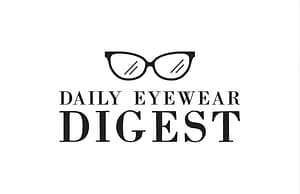Millions of people around the globe face the challenges of visual impairment, affecting their ability to navigate, communicate, and perform everyday tasks. Thanks to technological advancements, wearable devices now provide innovative solutions that empower visually impaired individuals to lead more independent and confident lives. Here, we explore five groundbreaking devices revolutionizing accessibility.
Understanding Visual Impairment
Visual impairment refers to a significant loss of vision that cannot be corrected with glasses, contacts, or surgery.
Common types include:
- Low Vision: Partial vision loss where some sight remains.
- Blindness: Total or near-total loss of vision.
Globally, over 295 million people live with moderate to severe visual impairments. These challenges often limit mobility and access to education or employment, but wearable technology is changing this narrative.
Device #1: Smart Glasses for Visual Assistance

Smart glasses offer magnification, object recognition, and text-to-speech capabilities.
Notable examples:
- eSight: Magnifies images and streams video directly to the user’s eyes.
- OrCam MyEye: Attaches to regular glasses, reading text and recognizing faces.
Use Cases:
- Reading books, signs, and menus.
- Identifying objects and people.
These glasses have opened new opportunities for visually impaired individuals, particularly in work and education.
Device #2: Haptic Feedback Wearables
Haptic technology uses vibrations or tactile feedback to communicate information.
Popular devices:
- Sunu Band: A sonar-equipped wristband that detects obstacles.
- WeWalk Smart Cane: A cane with built-in haptic feedback for navigation.
How they help:
- Alert users to objects within their path.
- Provide directional cues for safe travel.
These devices are especially useful in unfamiliar environments, enhancing spatial awareness.
Device #3: AI-Powered Wearable Cameras
AI-powered devices like OrCam MyEye combine camera technology with artificial intelligence.
Key features:
- Real-time text recognition for books, signs, and documents.
- Facial recognition for social interactions.
- Object identification for daily tasks.
This technology has proven invaluable for navigating social and professional settings.
Device #4: Navigation and GPS Devices

Navigation devices help visually impaired users travel independently.
Examples:
- WeWalk Smart Cane: Integrates GPS and smartphone connectivity for guided navigation.
- Clue App: Works with wearables to provide step-by-step directions.
These tools provide a sense of freedom by ensuring safe and accurate mobility.
Device #5: Wearable Health Monitors
Smartwatches and health monitors with accessibility features are improving health management.
Examples include:
- Apple Watch: Includes voiceover technology and alerts for heart rate abnormalities.
- Fitbit: Offers haptic feedback and audio updates on fitness progress.
Such devices support overall well-being and independence by alerting users to medical concerns and emergencies.
How Wearable Devices Improve Daily Life
Wearable technology offers:
- Independence: Users can perform tasks like shopping, reading, or navigating without assistance.
- Safety: Devices alert users to hazards, reducing the risk of accidents.
- Enhanced Confidence: Empowering individuals to participate in social and professional environments.
Challenges and Limitations
Despite their benefits, wearable devices face certain obstacles:
- High Costs: Advanced devices like OrCam can be expensive, limiting accessibility.
- Technological Gaps: Not all users are tech-savvy, requiring extensive training.
- Availability: Limited distribution in low-income regions.
Addressing these challenges is crucial to ensuring that wearable tech benefits all visually impaired individuals.
Future Trends in Wearable Tech

The future of wearable technology for visual impairment is promising.
Emerging trends include:
- Brain-Machine Interfaces: Using brain signals to interpret visual data.
- Advanced AI: Further improving object recognition and predictive navigation.
Collaboration between tech giants and healthcare providers will likely drive these advancements.
Real-Life Success Stories
- John’s Story: A blind teacher who regained independence using OrCam MyEye for reading and classroom tasks.
- Mary’s Journey: Navigating busy streets safely with the Sunu Band.
Such testimonials highlight the life-changing potential of wearable devices.
How to Choose the Right Device
When selecting a wearable device, consider:
- Purpose: Navigation, reading, or health monitoring.
- Cost: Evaluate affordability and potential funding options.
- Compatibility: Check integration with existing tools or devices.
FAQs
- What are wearable devices for the visually impaired?
Wearable devices are assistive tools designed to enhance mobility, safety, and independence for those with visual impairments. - Are these devices expensive?
Costs vary widely, with some high-end devices exceeding $2,000. However, grants and subsidies may be available. - Do these devices work for all types of visual impairment?
Most devices cater to a wide range of impairments, though specific functionality may vary. - Can wearable tech fully replace human assistance?
While highly beneficial, these devices often complement rather than replace human support. - Where can I buy these devices?
Many devices are available online through official brand websites or accessibility product retailers. - Are there government programs to fund such devices?
Yes, many countries offer funding or subsidies for assistive technology to support visually impaired individuals.
Conclusion
These five wearable devices are paving the way for greater independence and confidence among visually impaired individuals. By integrating cutting-edge technology with practical features, they empower users to navigate the world more effectively. The future of accessibility looks brighter as innovation continues to bridge gaps and open new opportunities.

